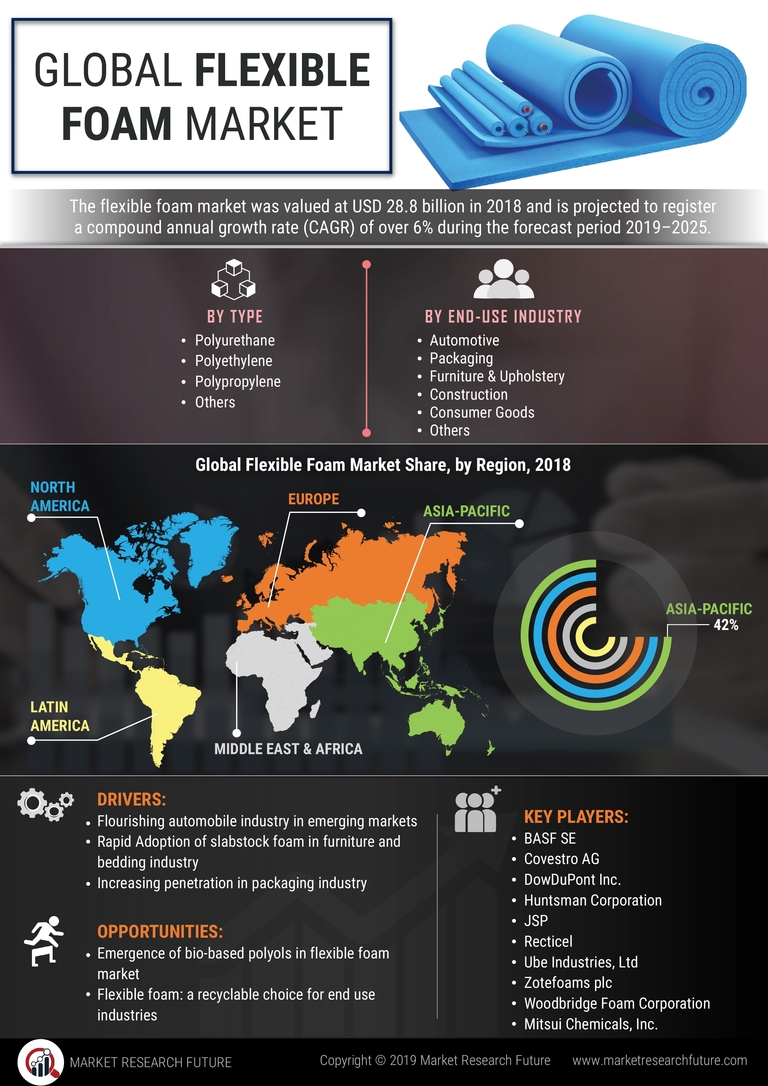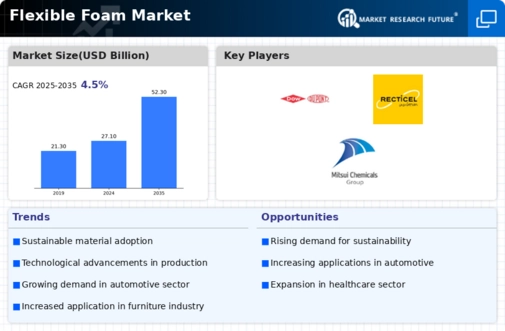Rising Demand in Automotive Sector
The automotive sector is experiencing a notable increase in demand for flexible foam materials, primarily due to their lightweight and cushioning properties. Flexible foam is utilized in various applications, including seats, headliners, and sound insulation. The flexible foam market is projected to benefit from the automotive industry's shift towards electric vehicles, which require advanced materials for enhanced performance and comfort. As manufacturers seek to improve fuel efficiency and reduce vehicle weight, the adoption of flexible foam is likely to rise. In 2025, the automotive segment is expected to account for a substantial share of the flexible foam market, indicating a robust growth trajectory driven by innovation and consumer preferences for comfort and safety.
Increased Focus on Health and Wellness
The growing emphasis on health and wellness is influencing the flexible foam market, particularly in the context of sleep quality and ergonomic support. Flexible foam products, such as memory foam mattresses and ergonomic chairs, are gaining traction as consumers become more aware of the importance of proper support for physical well-being. The flexible foam market is likely to expand as manufacturers innovate to create products that cater to health-conscious consumers. In 2025, the market for health-oriented flexible foam products is expected to grow, reflecting a broader trend towards wellness and self-care. This shift may lead to increased investment in research and development to enhance the performance and comfort of flexible foam materials.
Growth in Furniture and Bedding Industries
The furniture and bedding industries are witnessing a surge in the use of flexible foam, driven by consumer preferences for comfort and durability. Flexible foam is widely used in mattresses, sofas, and other upholstered furniture, providing essential support and comfort. The flexible foam market is likely to see significant growth as consumers increasingly prioritize quality sleep and ergonomic designs. In recent years, the demand for memory foam mattresses has escalated, with the market for bedding products projected to expand at a compound annual growth rate of over 5% through 2025. This trend suggests that the flexible foam market will continue to thrive, fueled by innovations in material technology and changing consumer lifestyles.
Technological Innovations in Manufacturing
Technological advancements in manufacturing processes are playing a crucial role in shaping the flexible foam market. Innovations such as improved production techniques and the development of new formulations are enhancing the performance characteristics of flexible foam. These advancements allow for greater customization and specialization, catering to diverse applications across various sectors. The flexible foam market is likely to benefit from these innovations, as manufacturers strive to meet the evolving demands of consumers and industries. In 2025, the market is expected to see a rise in the adoption of advanced manufacturing technologies, which could lead to increased efficiency and reduced production costs, ultimately driving growth in the flexible foam market.
Sustainability Trends and Eco-Friendly Products
The flexible foam market is increasingly influenced by sustainability trends, as consumers and manufacturers alike prioritize eco-friendly products. The demand for sustainable materials is prompting manufacturers to explore bio-based and recyclable flexible foam options. This shift towards sustainability is likely to reshape the flexible foam market, as companies seek to align with consumer values and regulatory requirements. In 2025, the market for eco-friendly flexible foam products is expected to expand, driven by innovations in material science and a growing awareness of environmental issues. This trend suggests that the flexible foam market will not only focus on performance but also on reducing environmental impact, potentially leading to new opportunities for growth.


















Leave a Comment